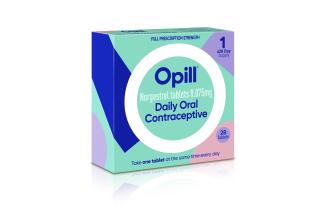Taking the Natural Option : As couples search for satisfactory forms of contraception, some ârediscoverâ a traditional method; others are introduced to birth control by an unconventional messenger.
Robin Johnson has tried the Pill.
âI was moody and grouchy. I wasnât the same person.â
She has tried a spermicidal suppository.
âIt foamed up in a mess and got hot and . . . â she wrinkles her nose.
Condoms, besides being inconvenient, make her sore. And Norplant--sticks of slow-release hormone implanted in the arm that often cause intermittent menstrual bleeding--is something that just doesnât appeal to her.
Like many women who canât tolerate the Pill or who canât take it for medical reasons, Johnsonâs life hasnât been improved much by the contraceptive ârevolution.â New delivery methods of hormones--such as Norplant and the recently approved Depo-Provera, an injectable, long-lasting contraceptive--often have side effects similar to the Pill. Barrier methods are just as annoying as theyâve always been. And the IUD, although safer than ever, is prescribed mainly for women who have had children. In part because of dissatisfaction with other methods, sterilization remains the No. 1 form of birth control for American couples.
Isnât there anything else out there?
Some couples are taking a second look at the once-derided ârhythm methodâ and are shocked to discover that--used correctly--natural family planning is not only scientific, but can be about 97.5% effective, according to a study conducted by the World Health Organization.
Even used imperfectly, periodic abstinence is roughly as effective as barrier methods, although it is significantly less effective than the Pill, according to the Alan Guttmacher Institute, a leading contraceptive research organization.
Periodic abstinence, which has an 81% effectiveness rate in average use, is slightly less effective than the condom, about the same in effectiveness as the diaphragm and significantly more effective than the sponge or spermicides.
The rhythm method, which involves abstaining from intercourse during the middle of a womanâs ovulatory cycle (halfway between menstrual periods) for up to two weeks, was developed in 1929. That was when scientists discovered that a woman releases an egg from an ovary about 14 days before the next menstrual flow begins. However, this calendar-based method has a high failure rate because most women do not have absolutely regular ovulatory cycles.
Later, researchers found that a womanâs temperature rises and falls in a regular pattern during her ovulatory cycle. By taking their temperatures daily, women were able to predict fairly accurately when they would ovulate. And in the 1960s, women began to learn to examine the consistency of their cervical mucus, another accurate indicator of the egg-producing cycle.
The above two methods of natural family planning are generally effective at predicting ovulation; failure usually occurs when couples have sex even when they know the woman is in her fertile period.
In part because of its record-keeping requirements, and in part because of its image as a puritanical habit for Catholics only, natural family planning is used by only 2% of American couples. To make compliance easier and to appeal to a wider audience, contraception specialists in the early â80s developed the âfertility awareness method.â
With this method, women track their cycles to determine their fertile periods. If a couple decides to have sex during the fertile period, they use a condom, diaphragm or spermicide. The rest of the month, they neednât bother with barriers. Proponents say the advantage of the method is that couples will be more likely to use barriers correctly and less likely to take chances if they know when the possibility of pregnancy is highest. They also note that couples can later use fertility awareness to help them conceive when they want to have a baby.
In reality, many women already use a combination of periodic abstinence and barriers--based on often-erroneous ideas of their fertile periods.
Johnson, who is 29 and has a 4-year-old daughter, says she and her boyfriend use withdrawal and abstinence--and condoms when she thinks sheâs most fertile. Johnson doesnât plot her ovulatory pattern, so sheâs only guessing at her fertile period. She knows that she could take her temperature daily and examine her cervical mucus to more accurately determine her fertile days, but that seems like too much trouble.
Johnson says she would welcome an easy way, such as a home urine test, to determine when abstinence or condom use was necessary: âI would like that better than anything. That would be real easy to do.â
Such a test may be available in the United States in about two years and could significantly increase the popularity of natural family planning. Quidel, a small San Diego biotech company, is developing a home urine test called Safeplan that will alert women when they are fertile--and thus when to just say no. The test could tell women when to avoid intercourse (or when to use condoms or a diaphragm) during the five to seven days a month when they are most fertile. A womanâs egg is viable only one day a month, and sperm can live inside a womanâs body for five to seven days, adding up to a fertile period of up to eight days a month. The company hopes to make a test kit that will give a âgreen lightâ to sex at the beginning of a womanâs infertile period each month and a âred lightâ when it ends.
Scientific, religiously correct, politically safe, granola-bar-natural dipstick birth control could have wide appeal. The concept is the same as current natural family planning methods, but the method far easier.
Barbara Kass-Annese is one of a number of people teaching the fertility-awareness method for the Los Angeles Regional Family Planning Council. They teach couples to plot a womanâs temperature and to examine her cervical mucus to determine her fertile days. Kass-Annese says a home urine test could make natural family planning attractive to technology-minded couples or to those who think keeping a daily ovulatory record is too much trouble. It could also increase compliance because it would probably reduce the number of necessary abstinence days.
This technology comes at a time when few innovative birth control methods are on the horizon. âNewâ products in the next couple of years are likely to be reformulations or new delivery methods of existing hormones, or variations on barriers, such as a female condom. Experts consider significant developments such as a contraceptive vaccine to be at least a decade away from market.
âWomen need new and alternative methods. . . . But I donât see any dramatic breakthroughs coming,â says Dr. Daniel Mishell Jr., chairman of the obstetrics and gynecology department at USC and a leading birth control researcher.
Contraceptive research in the United States has slowed to a snailâs pace, with political controversy and liability fears drying up funding sources, concluded a major 1990 National Research Council study. All but one major U.S. pharmaceutical company--Ortho Pharmaceutical--have pulled out of major contraceptive research. Given this situation, a relatively liability-free, non-invasive product such as Safeplan may be one of the few new ideas companies are willing to market.
Even Carl Djerassi, the man known as the father of the Pill, is an enthusiastic booster of natural family planning. Djerassi, one of several inventors of the Pill, figures that given the economic and political environment, breakthroughs such as the Pill are unlikely. A chemistry professor at Stanford, Djerassi believes that a âjet-age rhythm methodâ may represent the next step and serves on the board of Quidel.
Will the concept sell? When clients at the Womenâs Clinic, were asked their opinions about such a product, they were overwhelmingly positive.
Bernadette Palotay says she would definitely try the method: âI could see all my friends interested in it.â Palotay, a 25-year-old business student and nanny, has been on the Pill since she was 16. She went off the Pill twice because she âwanted to give my body a restâ and got pregnant each time--once because a condom broke and once because she didnât use the sponges she had bought.
Palotay says she has researched natural family planning but thinks the method requires too much effort. But a home urine test would be simple. âIf I could just know this week, donât have sex, OK, thatâs reasonable,â she says.
Monica Varah, 28, has been using the fertility awareness method for two years; she had been taking the Pill before then. She learned the method so she could become a family planning instructor and liked it so much that she and her husband put it into practice. She says the method has made her more aware of many aspects of her body and has even improved the coupleâs sex life. The period of abstinence each month âis an opportunity to do other things. We can have different sex, not intercourse every time.â She says a test such as Safeplan isnât necessary to the fertility awareness method, but it might be good for beginners, or to teach teen-agers about their ovulatory cycles.
A home test would have to overcome several hurdles. Natural family planning is still tainted by its reputation as âVatican roulette,â a label that stems from the days of the âcalendar method.â And the concept of tracking oneâs ovulatory cycle is unfamiliar to most women, although most do pay attention to their menstrual periods. Most women donât understand the connection between ovulation, intercourse and pregnancy.
Conversations with women at the Womenâs Clinic reveal the typical lack of knowledge about ovulation. Of six women interviewed, only two had some idea about when they ovulated and thus the time they were most likely to get pregnant. One 27-year-old thought she was most likely to get pregnant at the beginning of her period--a generally infertile time. Another woman thought she was fertile all month.
Varah teaches the fertility awareness method at the Womenâs Clinic; her clients are mostly non-Catholic women who are unable to take the Pill, allergic to spermicides or dissatisfied with condoms. She finds the ignorance of most women she teaches shocking--and so do the women themselves.
âA lot say, âGod, why didnât anyone ever tell me that?â â she says. âItâs basic. Itâs something every woman should know.â
For a list of natural family planning instructors and educational materials, write to Barbara Kass-Annese, Los Angeles Regional Family Planning Council, 3600 Wilshire Blvd., Suite 600, Los Angeles, Calif. 90010.






